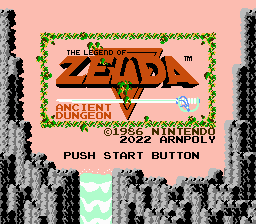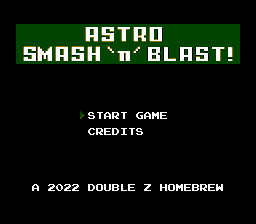
“We scour the Earth web for indie, retro, and niche gaming news so you don’t have to, drebnar!” – your faithful reporter
You could consider the act of creating a romhack to, itself, have difficulty levels.
The easiest kind of hack to make, usually, is the simple graphic hack. Most game engines don’t really care what its characters look like, it just tells the hardware where in memory to get the data to display the game objects. If you only change the graphics, the rest of the program is none the wiser. That’s why there were so many dumb visual hacks in the early days of romhacking.
Up one level of difficulty is the level edit. These can be pretty hard if unaided, but many games these days have bespoke map editors. Many classic-era games don’t store their area data internally as tilemaps, meaning it’s not quite true that you can change game levels to just anything, and many of these programs are not simple to learn or use, but it beats finding and editing pointers directly out of the game’s binary code.
A fairly difficult thing to do is to modify the game’s engine itself. Platformer engines are complex mechanisms, especially back in the days when they had to be highly optimized in order to leave time in each frame for other necessary game logic. Many Game Genie codes modify engine operation, but many of those same codes make the game glitchy and prone to crash. Especially if the modifications involve the creation of additional game states, that not only must interface with the rest of the game’s code without breaking things, but must also have room found for them inside a typically crowded game program.

Super Mario World Coin Chaos, by Jp32, doesn’t change the engine much, but makes them count. A few of them:

- Mario has unlimited lives, which isn’t an uncommon change for a hack like this.
- Mario’s health isn’t determined by his powerup state. 1Up Mushrooms have been repurposes to add a hit point, up to five. Powerups affect his abilities but don’t give him any extra hits.
- Fire Flowers grant a limited number of fireball shots. One level, Frozen, starts Mario out with them, and offer additional shots.
- While underwater, holding down Y allows rapid swimming, as if Mario were holding an item.

- The level Automatic is an autoscroller, but with a twist: Mario doesn’t have free travel throughout the screen, but moves forward automatically at walking speed.
- The level Climb grants Mario a wall jump! Like many game wall jumps, it’s hard to get used to, and requires tricky timing.
- Yoshi can fly forever, but Mario takes damage as usual while riding him.
The biggest change, though, is that instead of trying to reach a goal, Mario is trying to collect coins by whatever means he can. When he gets his 99th coin the level immediately ends.

In difficulty, the game isn’t Kaizo-hard, but it heats up rapidly. The first level is about as hard as a later Super Mario World level, and it gets tougher from there. There are two tracks of levels and the player can progress along either, but both are pretty tricky. I’ve gotten about two-thirds the way through so far, so if there’s any objectionable content after that point, well, mea culpa.
The variety of themes and how they affect the 99-coin objective make this a hack not to miss. It’s not very long in number of levels, but there’s a lot of challenge here waiting for you. Good luck!


SMW Coin Chaos (by Jp32)



















































